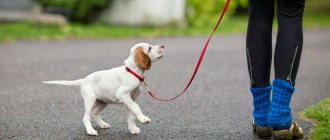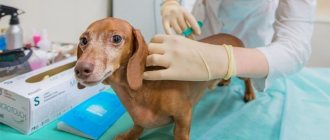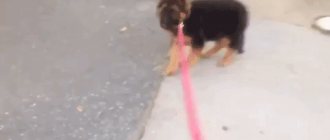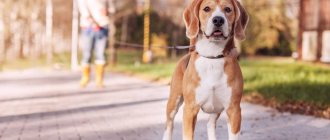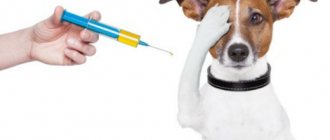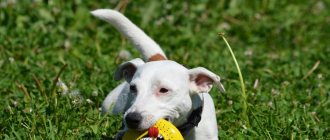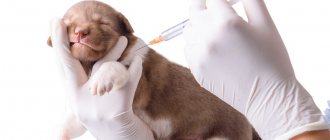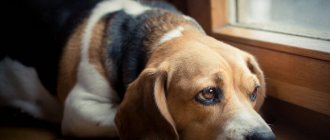How to prepare for your first walk with your puppy
The puppy needs very little from you: love, patience, proper diet and protection from diseases. Vaccination will help protect your pet from dangerous infectious diseases. The immune system of a small puppy is poorly developed, so it is forbidden to walk with him without vaccinations.
A puppy without vaccinations can be carried outside in your arms if desired. At the same time, try to keep him from contact with other animals and people. At the age of two months, you should not walk for a long time with your baby; at first, ten to fifteen minutes a day will be enough for him.
Prepare your puppy at home for his first real walks. Accustom your baby to a leash, a nickname, and simple commands. Follow your vaccination schedule.
Disposal of animal excrement and other waste
By law, a dog owner must clean up his dog's waste. However, difficulties arise when implementing the law, since this type of garbage must be disposed of separately from household waste.
Boxes designed for disposal of animal excrement
This means that throwing feces into a regular container placed outside is prohibited. In this regard, special boxes with corresponding signs appear in large cities, but so far this is rare.
Is it possible to walk a puppy after the first vaccination?
The first vaccination is given to the puppy at two months. Until this time, the baby still has innate immunity, which he acquired from his mother. However, after the first vaccination it is still dangerous to walk with the puppy. After 2-3 weeks, the puppy needs a second vaccination.
The puppy is taken out for a full walk two weeks after the second vaccination. This occurs at approximately 3.5 months of age.
Next, we will tell you what diseases your puppy should be vaccinated against and how to prepare your pet for vaccination.
When is the best time to feed
Another important question arises - when is it better to feed, before or after a walk.
Since digestion occurs in several stages, starting with food intake and its mechanical processing in the mouth and ending with the absorption of enzymes, this is not a quick process. It happens much better and more effectively in a calm environment. Therefore, it is better not to feed the puppy before a walk.
A well-fed baby will resemble a clumsy ball and will lose interest in everything that surrounds him.
Comprehensive vaccination for the baby. Basic moments
Dogs are susceptible to infectious diseases. Puppies are especially sensitive. The probability of infection of an unvaccinated pet within the city is very high. Vaccination is an effective way to prevent viral infections in dogs.
The vaccines with which a puppy is vaccinated are either against one disease or against several diseases at once (up to five diseases in one injection). The breeder from whom you purchased the puppy or the veterinarian at the clinic will help you choose the appropriate vaccine for your pet.
Which dog breeds need to wear a muzzle?
Small dog breeds, such as Yorkies or Spitz dogs, can be walked without a muzzle. This article applies to potentially dangerous dog breeds, which, according to the new law, are interpreted as breeds that pose a potential threat to human health and life.
Full list of dog breeds that pose a threat (according to Government Decree No. 974 dated July 29, 2019):
- Akbash;
- wolf-dogs and wolf-dog hybrids;
- ambuldog;
- North Caucasian dogs;
- American Bandog;
- Pit Bull Mastiff;
- Brazilian Bulldog;
- gul-dong;
- Alapaha purebred bulldog (Otto);
- bandog;
- bully kuta.
The list is expected to expand, since it is planned to include a total of about 70 different breeds.
Vaccination schedule for dogs
The first vaccination is given to the puppy at the age of two months. By this time, the effect of innate immunity has weakened, and vaccination will be effective. Puppies are vaccinated against the following diseases at two months:
- Plagues;
- Parvovirus enteritis;
- Infectious hepatitis;
- Canine parainfluenza;
- Leptospirosis.
After 2-3 weeks, the puppy receives a second vaccination against the listed diseases, and also receives a first vaccination against rabies.
Then the vaccination is repeated annually. However, pay attention to the instructions. Some vaccines last longer than a year.
How to prepare a puppy for vaccination
Only healthy animals are vaccinated. Therefore, before vaccination, the animal is carefully examined and its temperature is measured. Have your pet vaccinated by a specialist. You can take the animal to the clinic or call a veterinarian at home.
Before vaccination, be sure to treat your pet against external and internal parasites. This will help the puppy develop strong immunity. In addition, if there are parasites, it is more difficult for puppies to tolerate vaccination. It is also necessary to provide the baby with proper and complete feeding, protect him from drafts and stress, and do not wash him.
To avoid stress before vaccination, choose the complex drug IN-AP complex to deworm and treat the animal from external parasites.
When can you start walking your puppy?
Puppies have an incompletely formed, vulnerable immune system. Therefore, timely preventive vaccination will help protect your small pet from dangerous viruses, bacteria, and parasites.
As a rule, if there are no contraindications, the first comprehensive vaccination is given to the puppy at the age of 2.5-3 months. The second time, depending on the veterinary drug used, after 2 weeks.
After vaccination, the puppy is kept in quarantine, the duration of which is 3-4 weeks. Please note that you should not walk your dog immediately after vaccination. After the vaccine is administered, protective antibodies are produced in the body within 15-21 days, and during this period, owners must closely monitor the behavior and well-being of the dog. Only after the formation of specific immunity does the puppy become less vulnerable to various infections.
Thus, puppies are taken outside for the first time at the age of 3.5-4 months. At the same time, you can take the puppy for a walk without letting him go at the age of 1.5-2.5 months, avoiding contact with other dogs, street animals, birds, soil, and plants. Such walks, weather permitting, should be short (10-15 minutes).
Why do you need to walk your puppy outdoors?
For full development, it is important to provide a healthy dog with active movement, and the street is perfect for this. In addition, during a walk, new smells and sounds are learned, which is also an important part of development. On the street, the puppy gets to know other animals, looks attentively, remembers their habits and learns to interact with them.
Dogs need walks in the fresh air
Being in the fresh air, the dog learns the rules of behavior. In this case, all responsibility lies with the owner, because the training of commands and the future behavior of the baby depend on him.
For pets, except decorative breeds, the street is a place where they can relieve their natural needs. To this end, the owner must teach the puppy to go to the toilet outside. If this is not done, then permanent puddles at home are guaranteed.
Having found out how many months you can walk with a puppy, you need to gradually begin to accustom your pet to going outside the apartment.
Important! Frequent walks with puppies and adult dogs are a must. Huskies, terriers, spaniels, jacks, corgis and labradors especially enjoy long walks. These breeds need space, so it is better to choose parks and forests for walking.
First walks with a puppy, what you need to know
The first walks should take no more than 10-15 minutes. Take your dog outside several times a day (5-6 times), some time after eating, immediately after sleep. Gradually increase your walking time, reducing the number of walks.
Important! At first, take the puppy outside in your arms, but let the dog return home with his own paws.
If the puppy resists and refuses to follow the owner, pet, calm the pet, and gently pull the collar. Don't let your puppy get under your feet. Do not pick him up if the dog whines and asks to be held. You can only pick up a puppy if it is trembling, very frightened by something, and has a slight tremor. As soon as the puppy becomes interested in something, praise the dog and reward it with a treat.
If something really scared the puppy during his first walks, don’t focus on it. Distract the animal, calm it down, then bring the dog closer to the object that frightened it, give it the opportunity to examine and sniff it.
Reagents
Unfortunately, the streets are not always treated with sand or granite chips, which are harmless to animals. Chemical reagents are often used. These substances are very dangerous for the skin of a dog’s paw pads: they corrode it and leave bleeding wounds. Moreover, when trying to lick its paw, the animal eats the reagent. This can lead to severe poisoning.
It is advisable to walk your puppy in winter on clean snow. Pay attention to the exit from the entrance: if the paths are treated with a reagent, take the puppy in your arms and walk this path. If the puppy is large and you cannot lift it, you will need to purchase safety shoes. Your pet is unlikely to like it, but it will help out in dangerous areas.
Rules for first walks
Walking with a dog should be fun, active and safe, both for the puppy and for the surrounding animals and people.
Therefore, let’s consider the rules for the first walks:
- Walk your dog in a secluded, quiet place, away from roads and dog walking areas. The puppy must gradually get comfortable and get used to the new environment.
- Do not change the route or place of walking for at least 2-3 weeks. The dog must get used to walking. Only then walk the dog on different routes, in different places.
- Do not let your puppy off the leash until he responds adequately to various stimuli.
- If something scared or alerted your puppy during his first walk, redirect his attention, for example, with a toy. Distract your pet from the irritant with a gentle intonation.
- Don't feed your puppy before going for a walk. Bring treats for encouragement.
- Reward your puppy for good behavior and following commands with praise and treats.
- Walks should be varied, exciting, active.
- Always supervise your puppy if he is walking without a leash. Do not allow your dog to pick up food from the ground or show aggression towards other dogs or strangers. Gradually instill in your puppy the correct behavioral skills and manners on the street.
- Follow the regime and daily routine. Try to walk your dog at the same time every day.
- Attach a tag to your collar with your address and phone number. Always monitor the weather. Do not walk your puppy in windy, wet, frosty or rainy weather. Avoid hypothermia.
Basic walking rules
When walking with your four-legged pet, you must remain clean and monitor the safety of others. All waste must be disposed of in special boxes or regular bins, so be sure to carry bags for cleaning up feces with you.
Walking in public places is strictly on a leash, regardless of the age, size and nature of the animal. Walking without a leash is allowed only in dog parks and outside the city, that is, in the most deserted places.
The requirements for wearing a muzzle are more flexible. It is mandatory only for representatives of certain breeds.
Puppy's first walk
Walking is necessary for the puppy for physical development, good health, familiarization with the outside world and adaptation to the external environment. They teach the dog not to dirty the house, to behave correctly in the city and to interact with the owner. When can you take your puppy for a walk? What should you not do on your first walk and can your puppy interact with other dogs?
The puppy is taken out for a walk for the first time 10–14 days after completion of vaccination. The full course of puppy vaccinations followed by quarantine ends at 3.5 months.
Walking is a biological need for dogs
The dog’s need for long walks is due to its characteristics as a biological species. Remember the saying “The feet feed the wolf”? In nature, canines actively move in search of prey, allowing themselves to rest only after a successful hunt.
If you are sure that the domestic dog is the product of a long evolution that has taken it far from the wolf, then watch stray dogs. They are always running somewhere.
So, figuratively speaking, if birds must fly and fish must swim, then dogs must run. This is a biologically fixed instinct that inexorably demands its satisfaction.
When instinct is suppressed...
What happens if you neglect it? Of course, the dog will not die, but those numerous behavior problems that owners so often complain about will arise. Have you probably seen on the Internet a collection of photos clearly depicting the “invasion of Mamai” into an apartment in the absence of the owners?
And this is far from the only consequence - an unrealized instinct leads to many behavioral disorders. After all, only on walks does a dog have the opportunity to meet and build good relationships with other representatives of its species, as well as learn to be indifferent to strangers around.
With the help of walks, the dog learns about the world around him, develops both his senses and his intellect. This landscape is always the same for us. For a dog, there is a huge difference between the usual route yesterday and today.
She reads an open book of smells the way we read a fascinating novel, with an abundance of characters and plot twists. This is why dogs love long walks so much, and it is cruel to deprive them of this opportunity.


